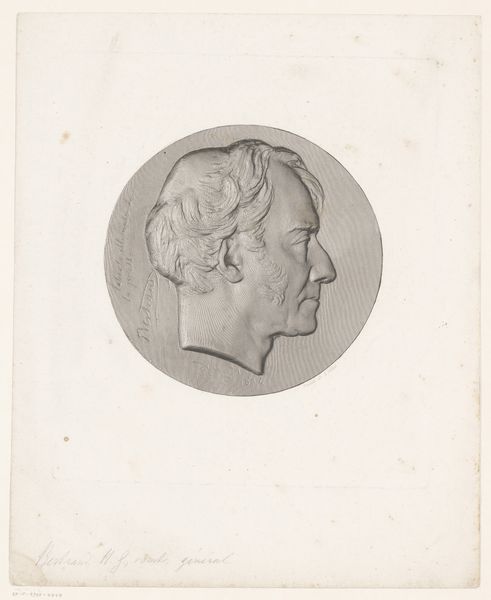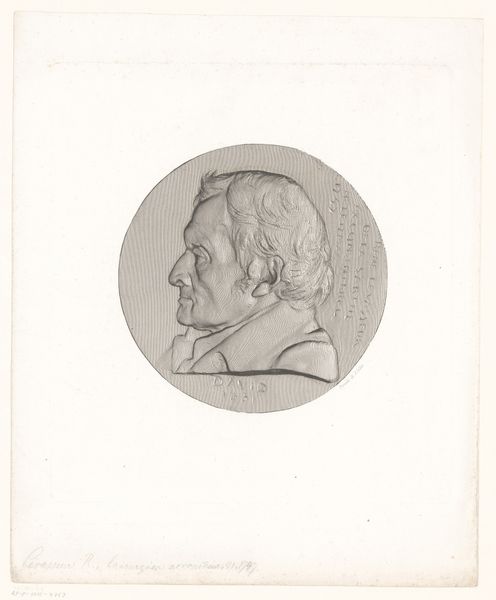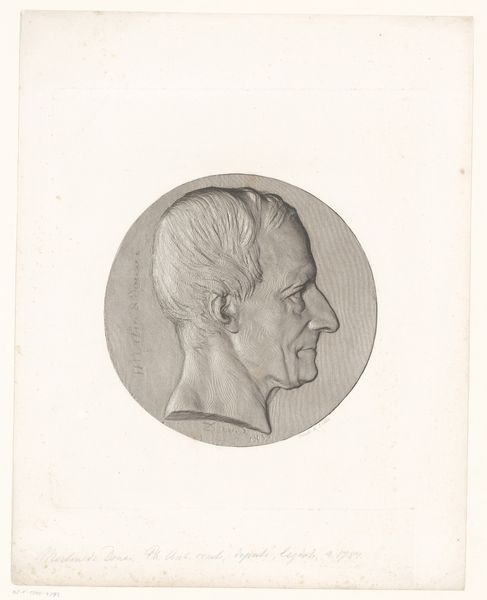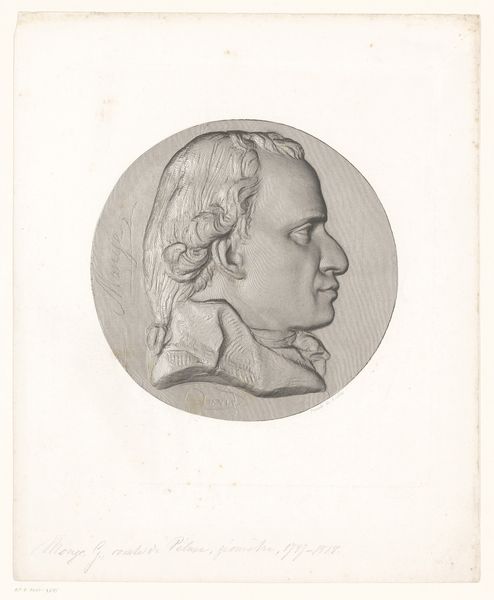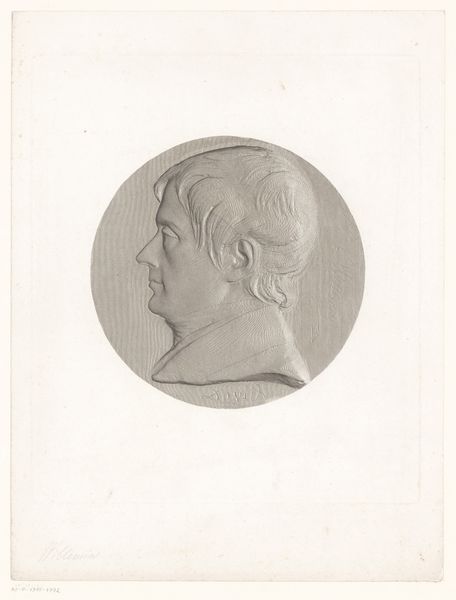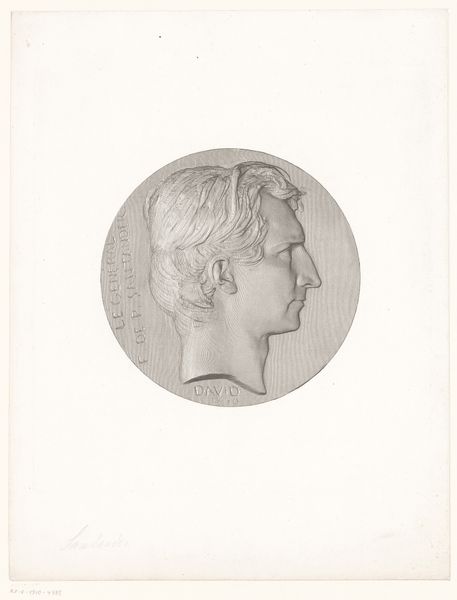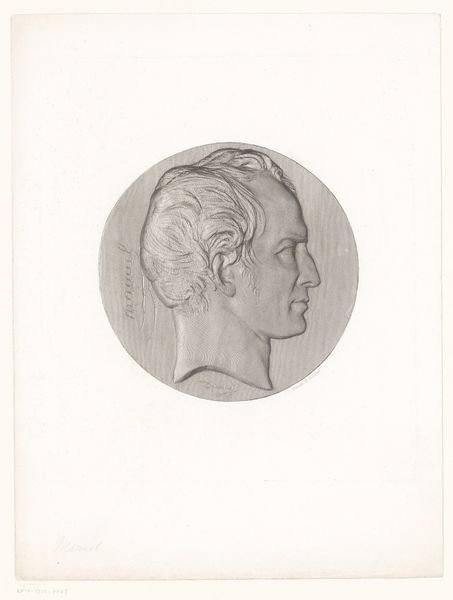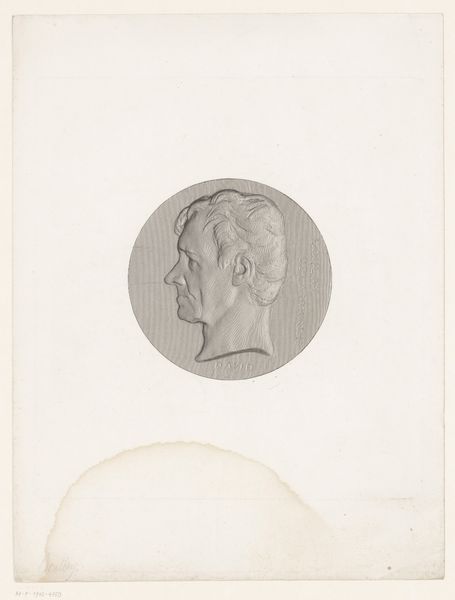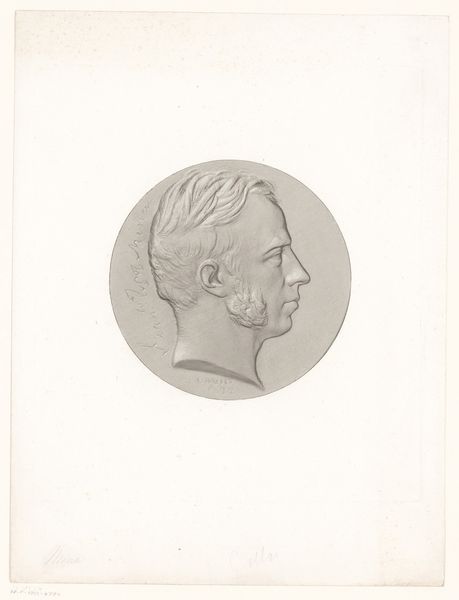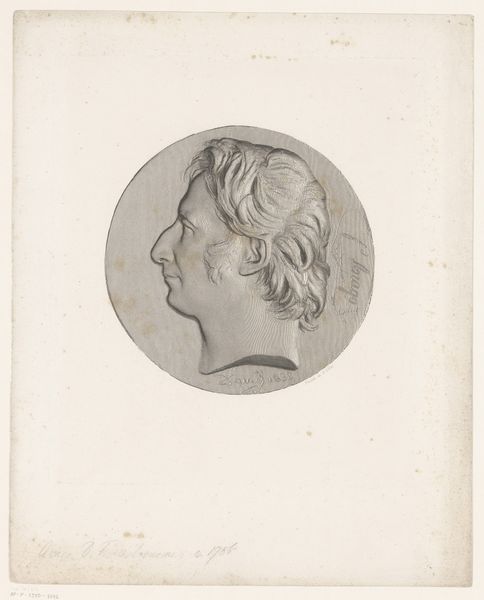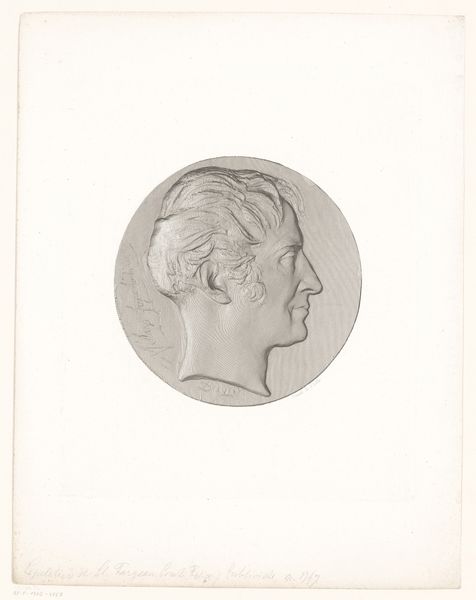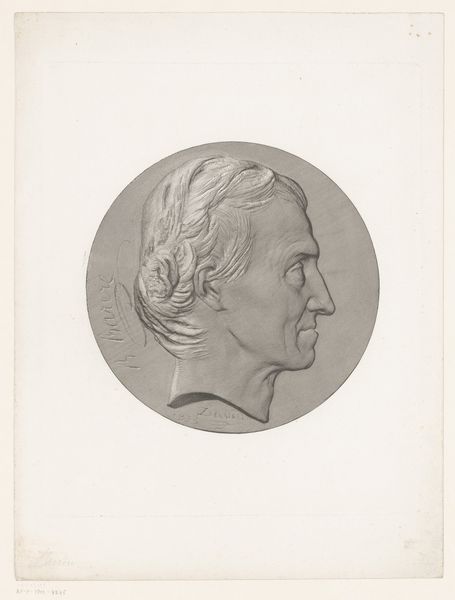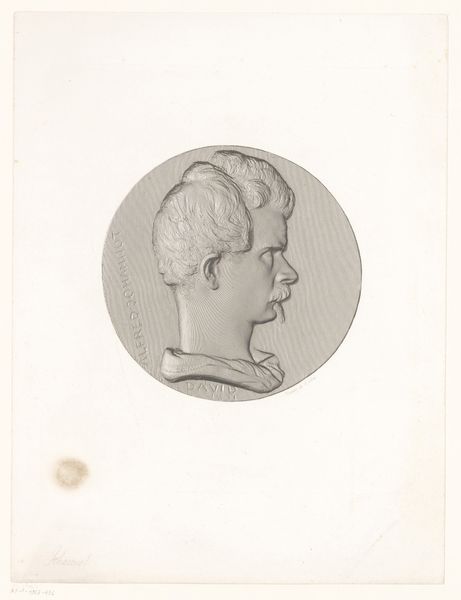
drawing, graphite, engraving
#
portrait
#
drawing
#
neoclacissism
#
pencil drawing
#
graphite
#
portrait drawing
#
history-painting
#
engraving
Dimensions: height 238 mm, width 212 mm
Copyright: Rijks Museum: Open Domain
Editor: So, this is "Medaille met portret van Antoine-Jean Gros," created after 1832 by Achille Collas. It seems to be an engraving, likely from a drawing. It reminds me of a coin or a cameo. What strikes you about this portrait? Curator: I notice the clean lines and precise rendering, clearly referencing Neoclassical ideals. But let's think about the process itself. The material choices – graphite, perhaps, translated into an engraving – dictate the image's final form. Consider the engraver, Collas: he's not creating from pure imagination, but rather re-producing, re-presenting another artist, Gros. How does this act of reproduction affect our understanding of the original artistic intention? Editor: That's interesting. I hadn't considered the act of reproduction as a lens through which to view the piece. It makes me wonder about the labor involved in creating engravings at this time. Curator: Exactly! The material conditions of production are crucial. Engraving was a skilled trade, demanding specialized labor. This wasn't just about artistic vision; it was about a system of production, about reproducing and circulating images for a wider consumer base. Was this commissioned? Was it meant for sale? These factors affect its meaning and impact. What does this say about Neoclassical art being perhaps more available? Editor: That definitely shifts my perspective. I was focused on the aesthetics, the historical reference, but thinking about the engraving as a manufactured object, part of a wider economic system… it makes it feel more complex. Curator: And think about the metal used to create the printing plate, or the ink... the accessibility this provides the general public... it takes it away from simply aesthetics, and into tangible concepts. Editor: It's like tracing the supply chain of an artwork! It opens up a whole new avenue for analysis. Curator: Precisely. Materiality and means of production are always implicated in artistic meaning. Editor: I'll never look at an engraving the same way again! Focusing on the process really unveils a hidden side to art history.
Comments
No comments
Be the first to comment and join the conversation on the ultimate creative platform.
